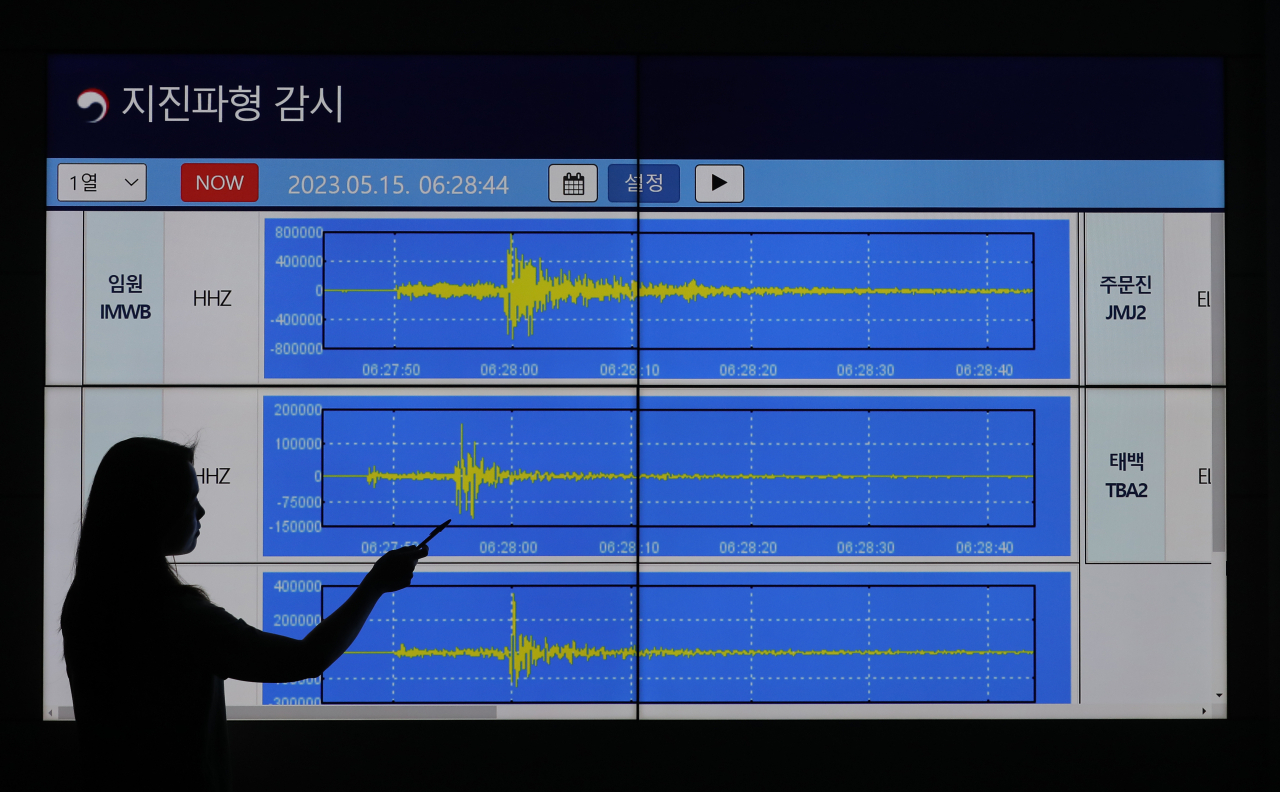 |
An employee Korea Meteorological Administration studies the seismic waveforms after a 4.5 magnitude earthquake struck off the east coast on May 15, 2023. (Newsis) |
More than 100 earthquakes with a magnitude above 2.0 were recorded on the Korean Peninsula in 2023, marking a slight increase compared to previous years, according to a report by the Korea Meteorological Administration on Monday.
Through its annual report on earthquake occurrences, the KMA noted that a total of 106 earthquakes above magnitude 2.0 were recorded on the peninsula last year, more than the annual average of 70.8. This figure is calculated based on the number of earthquake occurrences since a digital seismometer was installed in 1999.
A greater number of earthquakes were also recorded compared to 2022, when up to 77 earthquakes were recorded. Sixteen earthquakes with a magnitude above 3.0 were registered in 2023, which is also an increase compared to the 2022 figure of eight.
Within South Korea alone, 22 earthquakes were documented with a magnitude above 2.0, with five recorded in North Gyeongsang Province, four in Gangwon Province and three in North Jeolla Province. In other regions, 2.0 magnitude earthquakes were observed less than two times.
The KMA also reported that in 2023, North Gyeongsang Province saw a decrease in aftershocks from the earthquakes in Gyeongju and Pohang in 2016 and 2017. South Korea also recorded 706 microearthquakes with a magnitude less than 2.0, the same as the number recorded in 2022.
The largest earthquake recorded in 2023 was the 4.5 magnitude earthquake that struck off the east coast on May 15, making it the 22nd largest earthquake to be recorded since 1999. While no damages were reported, a total of 63 additional earthquakes were documented in the area, including 12 foreshocks and four aftershocks.



![[Weekender] Korea's traditional sauce culture gains global recognition](http://res.heraldm.com/phpwas/restmb_idxmake.php?idx=644&simg=/content/image/2024/11/21/20241121050153_0.jpg)



